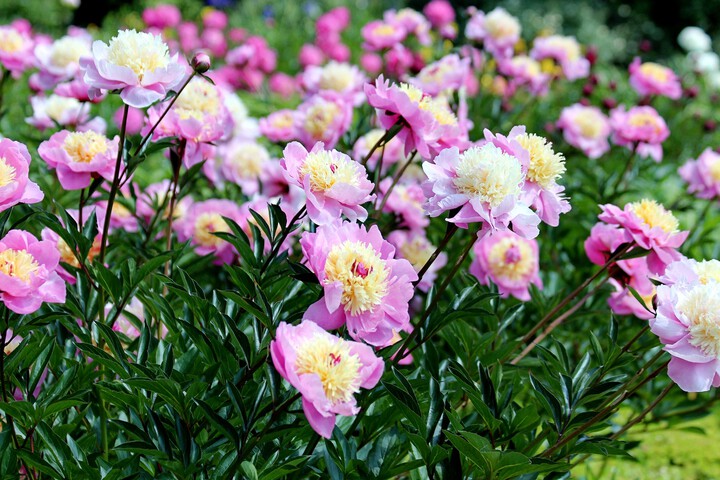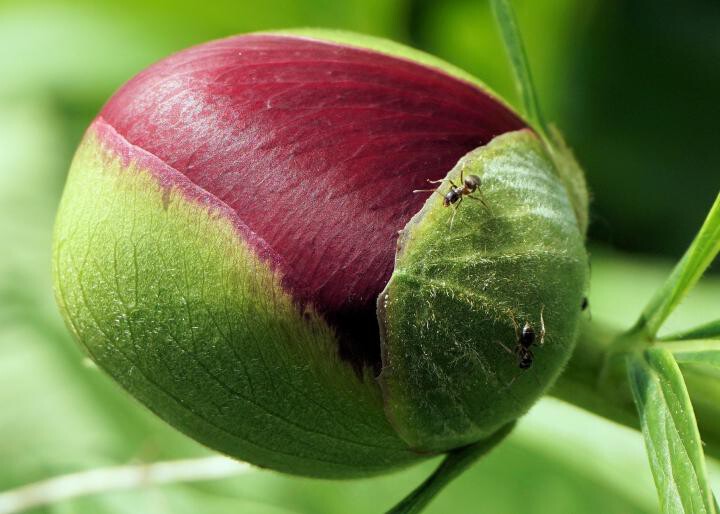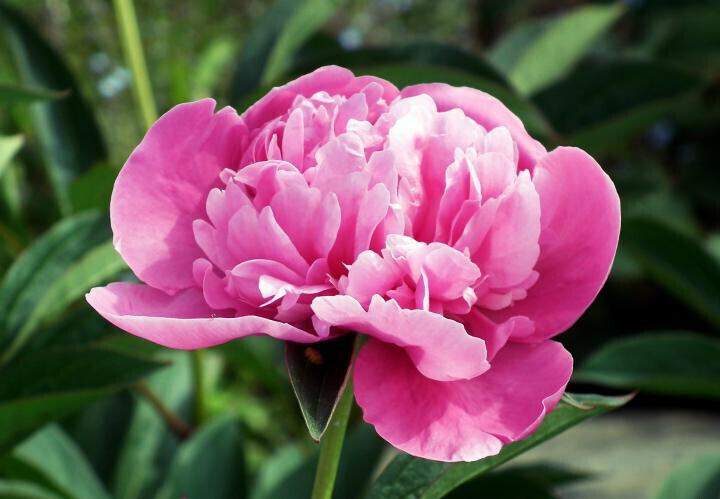The peony is outrageously beautiful in bloom from spring to summer—with lush foliage all summer long. Here’s how to grow peonies and get the best peony flowers in your garden.
Peonies are perennials that come back every year to take your breath away. In fact, the plants may live longer than you do—some have been known to thrive for at least 100 years.
WHEN IS PEONY SEASON? WHEN DO PEONIES BLOOM?
Peonies bloom from late spring through early summer, depending on your location and the variety of peony you’re growing.
Many nurseries offer early, midseason, and late blooming varieties, making it possible for you to stretch out the peony season over many weeks and enjoy those lovely blooms for as long as possible!
Peonies are hardy to Zone 3 and grow well as far south as Zones 7 and 8. In most of the U.S., the rules for success are simple: provide full sun and well-drained soil. Peonies even relish cold winters, because they need chilling for bud formation.
TYPES OF PEONY FLOWERS
There are six peony flower types to choose from: anemone, single, Japanese, semi-double, double, and bomb. Fragrances vary as well—some plants such as ‘Festiva Maxima’ and ‘Duchesse de Nemours’ have intoxicating rose-like scents while others are lemony or have no scent at all.

WHERE TO PLANT PEONIES
Peonies make fine sentinels lining walkways or a lovely low hedge. After its stunning bloom, the peony’s bushy clump of handsome glossy green leaves lasts all summer, and then turns purplish-red or gold in the fall, as stately and dignified as any flowering shrub.
In mixed borders, peonies bloom with columbines, baptisias, and veronicas, and combine well with irises and roses. Plant white peonies with yellow irises and a froth of forget-me-nots; set off pink peonies with blue Nepeta or violets.
PLANTING
WHEN TO PLANT PEONIES
Peony plants require little maintenance as long as they are planted properly and establish themselves. Note, however, that they do not respond well to transplanting, so you should plan your planting site accordingly.
Plant peonies in the fall: in late September and October in most of the U.S., and even later in the fall in Zones 7 and 8. (Find your planting zone here.)
If you must move a mature plant, fall is the time to do it—specifically, when the plant has gone dormant.
Peonies should be settled into place about six weeks before the ground freezes.
Although it’s certainly possible to plant peonies in the spring, spring-planted peonies just don’t do as well. Experts agree: they generally lag about a year behind those planted in the fall.
CHOOSING AND PREPARING A PLANTING SITE
Peonies are not too fussy, but choose your location wisely, as they resent disturbance and do not transplant well.
Peonies like full sun, and though they can manage with half a day, they bloom best in a sunny spot that gets 6 to 8 hours of sunlight each day.
Provide shelter from strong winds, as peonies’ large blooms can make them top heavy. (Use stakes to hold them up, if necessary.)
Don’t plant too close to trees or shrubs, as peonies don’t like to compete for food, light, and moisture.
Grow peonies in deep, fertile, humus-rich, moist soil that drains well. Soil pH should be neutral.
HOW TO PLANT PEONIES
Peonies are usually sold as bare-root tubers with 3 to 5 eyes (buds), divisions of a 3- or 4-year-old plant.
Space peonies 3 to 4 feet apart to allow for good air circulation between the plants. Stagnant, humid air can be a recipe for disease to develop.
Dig a generous-sized hole, about 2 feet deep and 2 feet across in well-drained soil in a sunny spot. The soil will benefit from the addition of organic material in the planting hole. If the soil is heavy or very sandy, enrich it with extra compost. Incorporate about one cup of bonemeal into the soil. Learn more about soil amendments and preparing soil for planting.
Set the root so the eyes face upward on top of a mound of soil in the hole, placing the roots just 2 inches below the soil surface. Don’t plant too deep! (In southern states, choose early-blooming varieties, plant them about 1 inch deep, and provide some shade.)
Then, backfill the hole, taking care that the soil doesn’t settle and bury the root deeper than 2 inches. Tamp the soil gently.
When planting a container-grown peony, cover it no deeper than it grew in the pot.
Water thoroughly at the time of planting.

CARE
HOW TO CARE FOR PEONIES
Like children, young peonies take time to develop. They usually need a few years to establish themselves, bloom, and grow. And soon enough, they venture out on their own, mature and well-adjusted… Wait, no, that’s just children.
Peonies thrive on benign neglect. Unlike most perennials, they don’t need to be dug and divided every few years.
Spare the fertilizer. Work the soil well before you plant, mixing in compost and a little fertilizer, and that should be enough.
If your soil is poor, the time to apply fertilizer (bonemeal, compost, or well-rotted manure) is early summer, after the peonies have bloomed and you have deadheaded the flowers. Don’t fertilize more than every few years.
Help the stems. If peonies have any structural weakness, it is their stems, which are sometimes not strong enough to support their gigantic blossoms. Consider three-legged metal peony rings or wire tomato cages that allow the plant to grow through the center of the support.
Deadhead peony blossoms as soon as they begin to fade, cutting to a strong leaf so that the stem doesn’t stick out of the foliage. Cut the foliage to the ground in the fall to avoid any overwintering diseases.
Don’t smother peonies with mulch. Where cold temperatures are severe, for the first winter after planting you can mulch VERY loosely with pine needles or shredded bark. Remove mulch in the spring.
PESTS/DISEASES
Peonies are generally very hardy. Plus, peonies are also one of many deer-resistant plants you can grow in your garden.
However, they are susceptible to:
Verticillium wilt
Ringspot virus
Tip blight
Stem rot
Botrytis blight
Leaf blotch
Japanese beetles
Nematodes
WHY ARE THERE ANTS ON MY PEONIES?
Many gardeners wonder why so many ants crawl on the peony buds. Don’t worry! They are just eating the peony’s nectar in exchange for attacking bud-eating pests. They are attracted to the sugary droplets on the outside of flower buds or to the honeydew produced by scale insects and aphids. Never spray the ants; they’re helping you by keeping your peonies safe!

HARVEST/STORAGE
KEEPING PEONY FLOWERS IN A VASE
Peonies make wonderful cut flowers, lasting more than a week in a vase. For best results, cut long stems in the morning when the buds are still fairly tight.
You can wrap freshly cut peony stems in damp paper towel and put them in a plastic bag in the refrigerator until you’re ready to use them. When removing the peonies from the refrigerator give the stems a fresh cut and place them in lukewarm water to wake them up.

RECOMMENDED VARIETIES
Peonies bloom between late spring and early summer, but you can plan your garden for a successive display of flowers from mid-May to late June by planting a selection of varieties. Here are some choices:
‘Early Scout’: very early-blooming, red single flowers
‘Firelight’: very early-blooming, pale-pink single blossoms
‘Karl Rosenfield’: midseason-blooming, double with large crimson blossoms
‘Norma Volz’: midseason-blooming; large, white, fully double flowers
‘Elsa Sass’: late-season–blooming; double, pure-white, camellia-like flowers
‘Rare Flower of Frosty Dew’: late-season–blooming, 3-foot plant with bright pink fragrant blooms
WIT & WISDOM
Peonies are said to symbolize a happy life and a happy marriage. See more flower meanings here.
Marco Polo described peony blossoms as “roses as big as cabbages”.
According to the ancient practice of phenology, when peonies blossom, it is safe to plant heat-loving melons, such as cantaloupe.
Peony petals are edible. Add to summer salads or use as garnish for lemonade and ice tea.